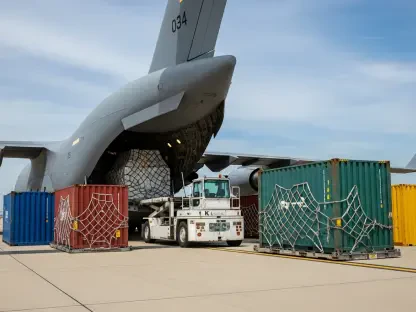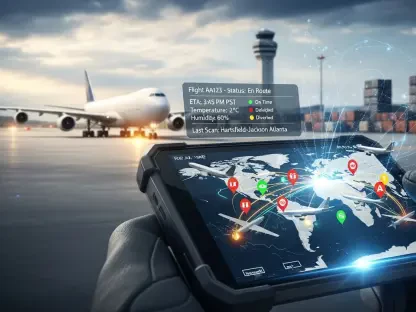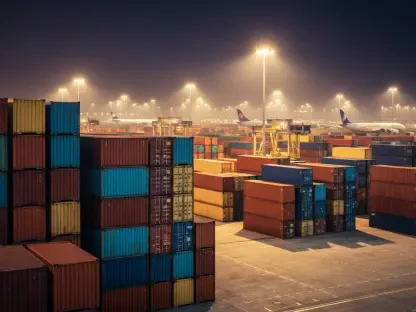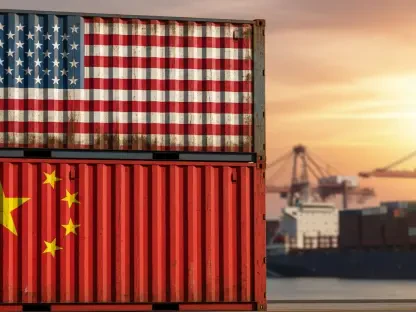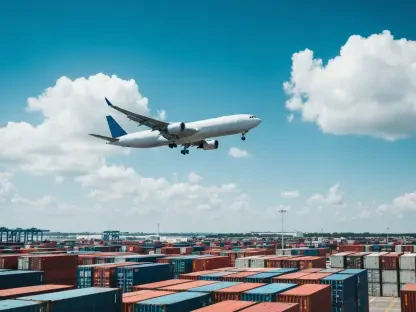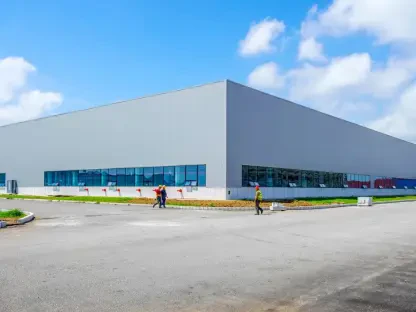In the rapidly evolving world of warehousing and supply chain management, digital technologies are playing a crucial role in transforming traditional processes. These advancements, ranging from enhanced inventory tracking to real-time data-driven decision-making, are revolutionizing the logistics landscape and redefining how businesses manage their supply chains. This article delves into the top digital solutions making waves in the industry, supported by real-life examples from leading companies. This promising growth trajectory highlights the benefits of digital warehousing, which includes improved inventory tracking, decreased operational costs, and enhanced decision-making capacities.
The Rise of Digital Warehousing
Digital warehousing represents a segment experiencing robust growth as companies across the globe embrace advanced technologies to improve efficiency and reduce costs significantly. The global digital warehousing market is projected to reach an impressive US$21.9 billion by 2026, underscoring the sector’s burgeoning potential and the increasing reliance on technology-based solutions. Companies are increasingly adopting Warehouse Management Systems (WMS), the Internet of Things (IoT), and robotics to streamline their operations, with these technologies offering myriad benefits from better inventory management to enhanced operational efficiency and cost savings, making them indispensable in modern supply chains.
Among the most crucial components driving this upward trajectory is the enhancement of inventory tracking systems. Enhanced inventory tracking not only provides a real-time view of stock levels but also minimizes errors in inventory counts, allowing for more accurate supply chain decisions. The integration of these advanced systems produces an environment where decision-making is data-driven and responsive, making it possible to optimize processes continuously. Companies can maintain optimal stock levels, ensuring the availability of products when needed and reducing the likelihood of stockouts or surpluses. All these benefits translate into decreased operational costs and improved productivity, which are fundamental to staying competitive in an increasingly demanding market.
Radio Frequency Identification (RFID)
Radio Frequency Identification (RFID) technology is revolutionizing inventory management by enabling automatic identification and tracking of tagged objects using electromagnetic fields. Unlike traditional barcodes, RFID tags can be read remotely without a line of sight, making the process faster and more efficient. This technology has proven to be a game-changer, enhancing inventory accuracy and visibility significantly.
Nike exemplifies the successful implementation of RFID in its distribution centers, where every product is tagged with an RFID chip. This allows for improved real-time visibility and stock management, which effectively reduces errors and enhances inventory accuracy. By utilizing RFID technology, Nike can ensure that the right products are always available at the right time, thereby optimizing their inventory processes. The remote reading capability of RFID tags also streamlines the checking and counting process, making it possible to monitor vast quantities of stock in real-time without physical intervention.
The advantages of RFID technology extend beyond simple inventory tracking. RFID systems are also instrumental in improving supply chain transparency, providing end-to-end visibility and allowing for more precise forecasting and planning. This improved visibility can help identify potential bottlenecks and inefficiencies within the supply chain, enabling companies to address issues proactively. Additionally, the data collected through RFID can be used for advanced analytics, providing valuable insights that drive strategic decision-making and operational improvements.
Leveraging Drones for Inventory Management
Drones, also known as unmanned aerial vehicles (UAVs), are increasingly being utilized in warehousing for their ability to provide real-time data and enhance inventory accuracy. These drones can be controlled remotely or even function autonomously, thereby saving time and reducing the scope for human error. The integration of drones into warehousing operations signifies a significant leap towards automation, optimizing various aspects of inventory management and overall supply chain efficiency.
Walmart, for instance, employs drones to scan warehouse shelves and monitor inventory levels. This not only speeds up the inventory process but also enhances the precision of inventory counts, optimizing overall supply chain efficiency. The use of drones is a testament to the move towards automation in warehousing operations. Drones equipped with advanced sensors and cameras can quickly scan large areas and provide detailed real-time data, thus facilitating proactive inventory management. With less manual intervention required, the risk of human error is minimized, leading to more accurate inventory records and better stock management.
The application of drones extends beyond simple inventory monitoring; they can also be used for various other tasks within the warehouse environment. For instance, drones can inspect hard-to-reach areas, monitor equipment and infrastructure conditions, and even assist in security surveillance. The data collected from these different applications can be integrated and analyzed to provide a holistic view of the warehouse’s operational status, enabling better decision-making and optimized resource allocation. Overall, the adoption of drone technology in warehousing represents a significant step forward in the pursuit of efficiency, accuracy, and enhanced operational performance.
Warehouse Management Systems (WMS)
Warehouse Management Systems (WMS) are pivotal in optimizing the storage, tracking, and movement of inventory within warehouses. These software solutions streamline operations and improve order fulfillment processes, making them essential in the modern logistics landscape. By managing inventory levels, processing orders, and coordinating warehouse activities, WMS ensures that warehouse operations run smoothly and efficiently.
Amazon’s proprietary WMS exemplifies state-of-the-art warehousing. By integrating robotics and automation tools, Amazon ensures faster processing times and better inventory control. This sophisticated system enables the company to maintain its competitive edge in order fulfillment and customer satisfaction. The WMS is capable of handling complex inventory tasks, from receiving and put-away to order picking and shipping, all while providing real-time visibility into stock levels. This level of efficiency and control allows Amazon to meet the high demands of e-commerce, ensuring timely delivery of products to customers and maintaining high service standards.
The implementation of a robust WMS also facilitates better resource management within warehouses. By analyzing data on inventory movements and warehouse activities, companies can optimize labor allocation, reduce operational costs, and improve overall efficiency. For example, by understanding peak periods of activity, warehouse managers can schedule staff more effectively and ensure that resources are available where they are needed most. Additionally, the data collected by WMS can be used for continuous improvement, identifying areas for optimization and implementing changes that enhance productivity and performance over the long term.
The Internet of Things (IoT) in Warehousing
The Internet of Things (IoT) is a game-changer in warehouse management, thanks to its ability to connect devices and collect and exchange data over the internet. IoT sensors can monitor various parameters such as temperature, humidity, and equipment status, providing valuable insights that help optimize warehouse operations. The connectivity facilitated by IoT enables real-time monitoring and control, allowing for more efficient and responsive management of warehouse environments.
DHL’s “Smart Warehouse” initiative leverages IoT technology to monitor and manage warehouse conditions effectively. By employing IoT sensors, DHL can reduce risks and refine its warehousing processes, ensuring optimal operational efficiency and maintaining the quality of stored products. IoT devices can alert managers to potential issues before they become critical problems, allowing for proactive maintenance and quick resolution of any disruptions. This level of insight and control is particularly valuable in warehousing environments where conditions such as temperature and humidity can significantly affect product quality and safety.
The benefits of IoT extend beyond monitoring environmental conditions; IoT-enabled devices can also track the movement and status of inventory within the warehouse. By attaching IoT sensors to goods, companies can gain real-time visibility into product location and condition, enhancing inventory accuracy and improving order fulfillment processes. Moreover, IoT data can be integrated with other digital solutions, such as WMS and RFID, to create a comprehensive, interconnected warehouse management system. This integration allows for seamless data flow and more sophisticated analytics, ultimately leading to better decision-making and optimized warehouse operations.
Augmented Reality (AR) in Warehousing
Augmented Reality (AR) overlays digital information onto the physical environment, enhancing the user experience and boosting operational performance. AR can significantly improve the accuracy and efficiency of picking and packing processes, making it a valuable tool in modern warehousing operations. By providing warehouse workers with real-time, context-sensitive information, AR helps streamline tasks and reduce errors, ultimately leading to better productivity and customer satisfaction.
Zara’s integration of AR glasses for warehouse workers highlights the potential of this technology. These AR glasses assist workers in accurately picking and packing orders, thereby reducing errors and improving order fulfillment speed. As a result, Zara enhances its operational efficiency and customer satisfaction. The AR glasses provide visual cues and instructions directly in the workers’ field of view, guiding them through the picking and packing process step by step. This reduces the likelihood of mistakes and ensures that orders are processed quickly and accurately.
The use of AR in warehousing is not limited to picking and packing; it can also assist in tasks such as training, maintenance, and inventory management. For example, AR can provide new employees with interactive tutorials and on-the-job guidance, speeding up the training process and improving workforce readiness. In maintenance, AR can overlay technical information onto equipment, helping technicians diagnose and resolve issues more efficiently. The versatility and potential applications of AR make it a valuable addition to the suite of digital solutions transforming warehousing operations.
Automated Guided Vehicles (AGVs)
Automated Guided Vehicles (AGVs) are robots designed to transport materials within warehouses autonomously. AGVs help reduce the need for manual labor and significantly increase operational efficiency. By automating the movement of goods, AGVs streamline warehouse processes and allow human workers to focus on more complex tasks.
IKEA uses AGVs to streamline the movement of goods within its warehouses. This implementation not only reduces labor costs but also accelerates product movement and enhances overall productivity. The use of AGVs is an excellent example of how automation is reshaping warehouse operations. AGVs can be programmed to follow specific routes and schedules, ensuring timely and accurate delivery of materials within the warehouse. They are equipped with sensors and navigation systems that allow them to navigate safely around obstacles and coordinate with other automated systems.
The integration of AGVs into warehouses also enhances flexibility and scalability. As business needs change, AGVs can be reprogrammed or redeployed to handle different tasks or accommodate new workflows. This adaptability makes AGVs a valuable asset for warehouses looking to improve efficiency and responsiveness. Additionally, the data collected by AGVs during their operations can be analyzed to identify patterns and areas for further optimization, contributing to continuous improvement in warehouse performance.
Cloud Computing in Warehousing
Cloud computing involves storing, managing, and processing data via remote servers accessed over the internet. This technology provides numerous benefits, including improved data accessibility, scalability, and cost-effectiveness. By leveraging cloud computing, warehousing operations can achieve higher levels of efficiency and coordination, leading to better overall performance.
UPS leverages cloud computing through its UPS Orion routing software that optimizes delivery routes in real-time. By accessing real-time data and analytics, UPS can make more informed decisions, ultimately enhancing overall logistics operations and improving service delivery. The cloud-based system allows UPS to integrate data from various sources and analyze it to optimize route planning and resource allocation. This results in reduced delivery times, lower fuel consumption, and improved customer satisfaction.
The scalability of cloud computing also means that companies can easily expand their systems to accommodate growing data volumes and more complex operations without significant upfront investment. This flexibility enables companies to adapt to changing market conditions and customer demands more effectively. Furthermore, the use of cloud computing enhances collaboration and communication across different parts of the supply chain. By providing a centralized platform for data sharing and analysis, cloud computing enables better coordination between suppliers, manufacturers, and distributors, leading to more integrated and streamlined supply chain operations.
Automation and Robotics
In the fast-paced world of warehousing and supply chain management, digital technologies play a significant role in modernizing traditional processes. These innovations, such as advanced inventory tracking systems and real-time data-driven decision-making platforms, are dramatically transforming the logistics sector. Companies are now able to manage their supply chains more efficiently and effectively, thanks to these digital advancements. This article explores the leading digital solutions reshaping the industry, complete with real-life examples from top-tier companies.
For instance, enhanced inventory tracking allows businesses to maintain accurate stock levels, reducing the risk of overstocking or stockouts. Real-time decision-making supported by up-to-the-minute data helps managers address issues immediately, improving overall operational efficiency. These technological strides lead to decreased operational costs by minimizing wasted resources and optimizing supply chain workflows.
The rise of digital warehousing offers multiple benefits, including improved accuracy in inventory management, lowered operational expenses, and better decision-making capabilities. This promising trend highlights how adopting digital tools can provide businesses with a competitive edge, ultimately revolutionizing the way supply chains are managed. As we continue to navigate through this digital era, it’s clear that these technologies are indispensable for modern warehousing and supply chain operations.



